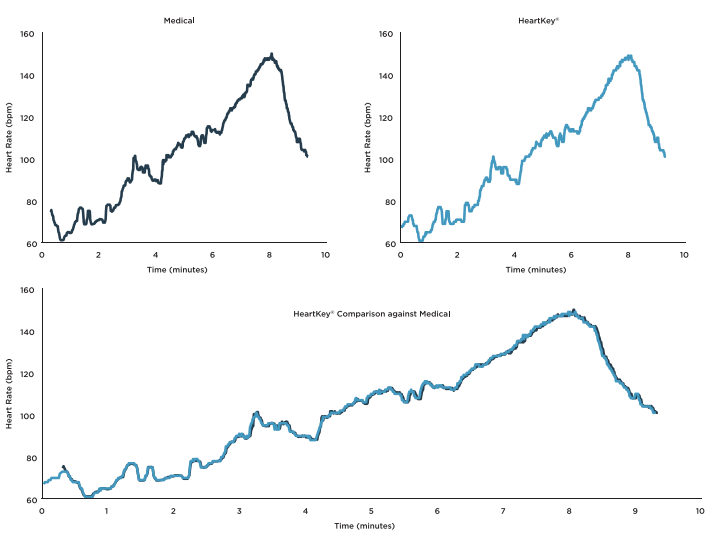
This graph shows results from the HeartKey® Heart Rate algorithm and from a well known medical holter monitor. It is clear to see there is virtually no difference between the two, displaying HeartKey®’s excellent performance against a single lead holter monitor.
To find out more about HeartKey®’s accuracy in comparison to leading health trackers on the market, read Mark Lilburn’s analysis in How Accurate Are Health Tracking Tools?
Diversity in our Data
As well as our world class algorithm solutions, we ensure the highest levels of accuracy through using a diverse range of databases within our development and testing. By obtaining both wet electrode and dry electrode data we ensure excellent algorithm performance in any end product.
We aim to be representative of a wide range of the population by carrying out global collections to ensure the highest possible algorithm performance across populations. Data has been collected across various form factors including automotive, smartwatches and smart clothing, as well as using various ECG Leads to ensure HeartKey® will perform to the highest standards across a wide range of use cases.